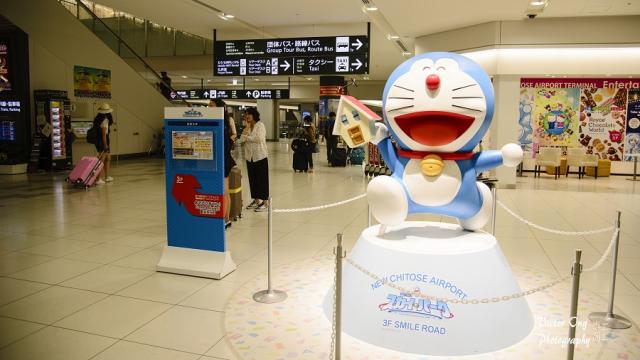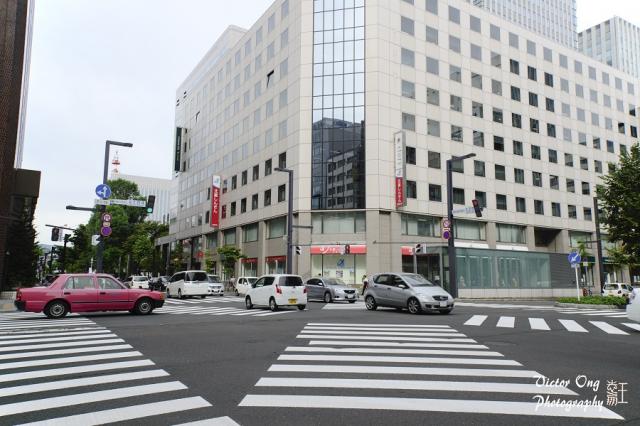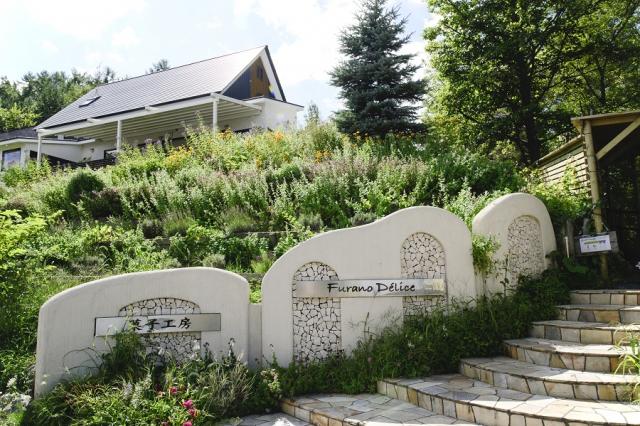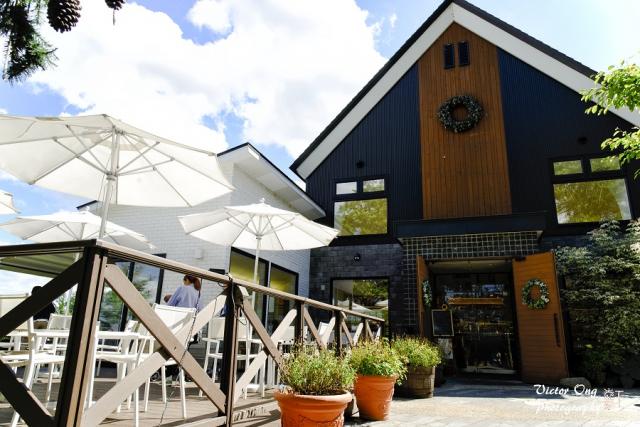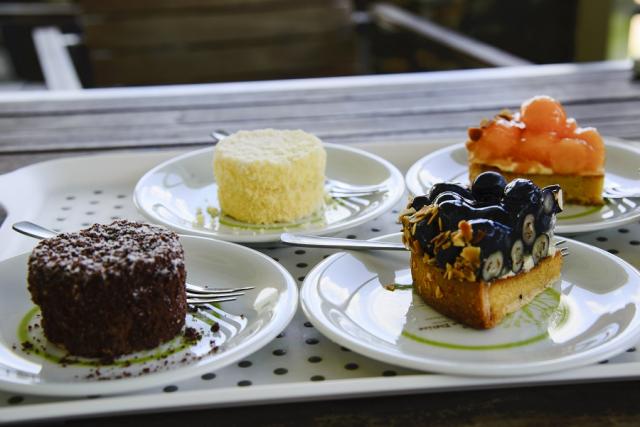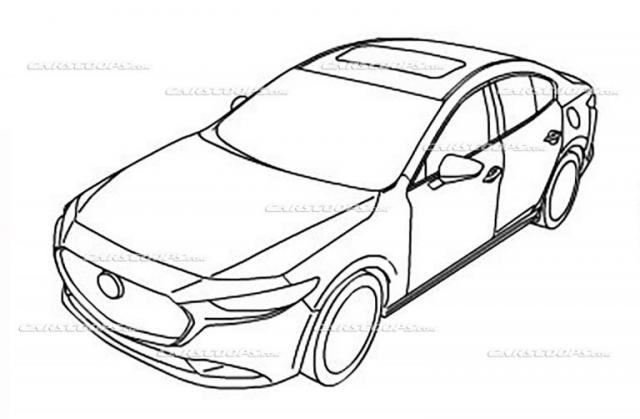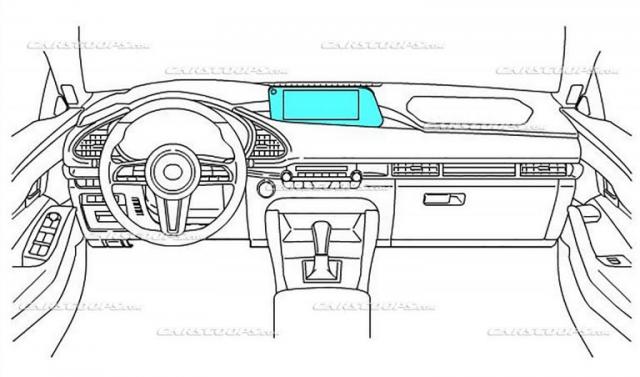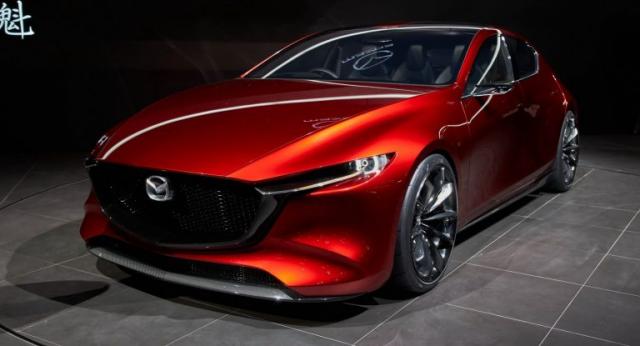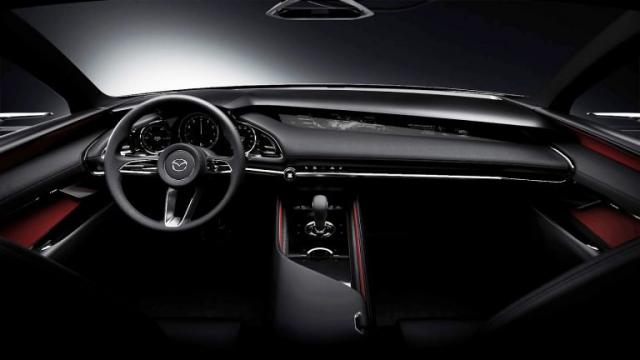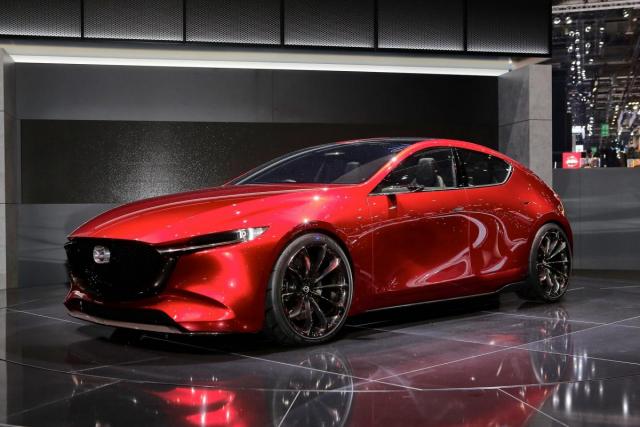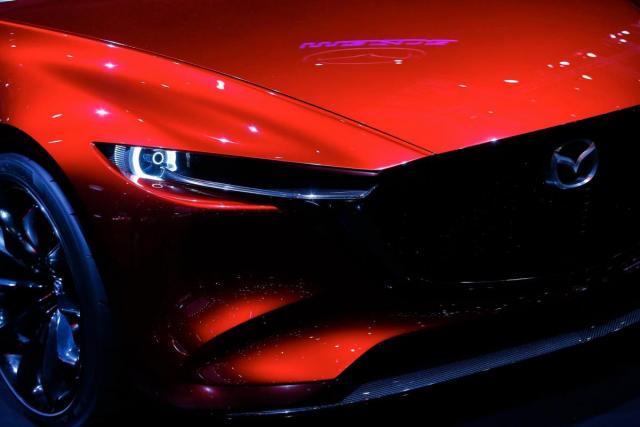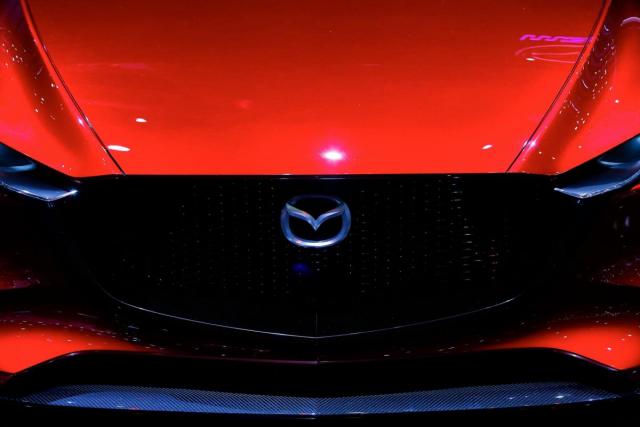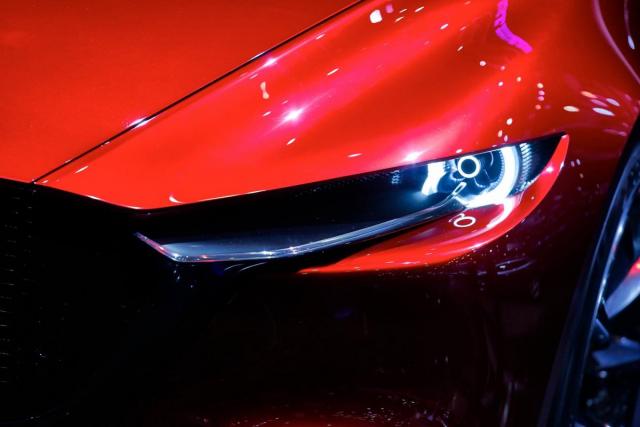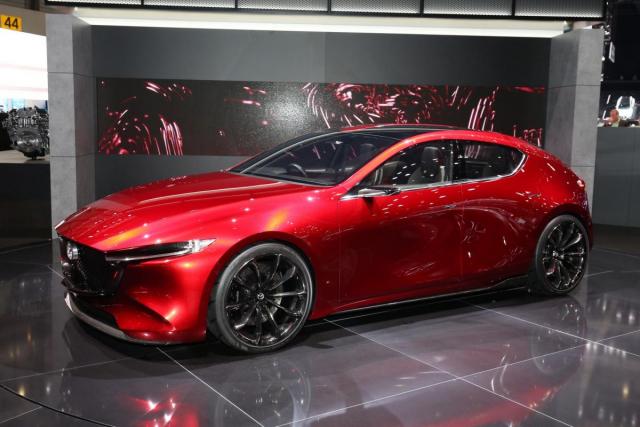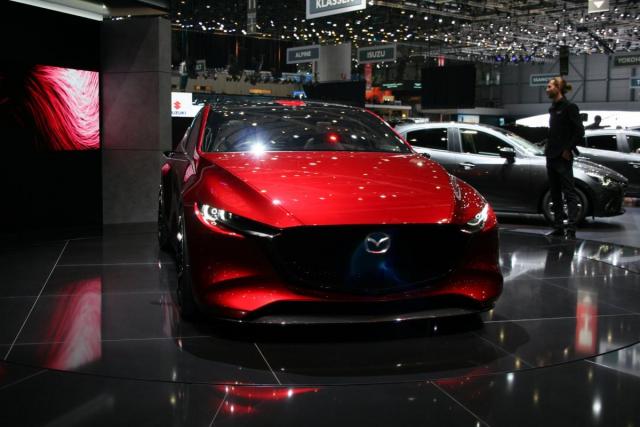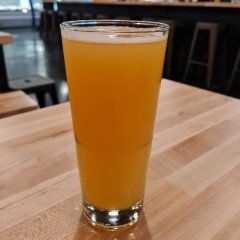Search the Community
Showing results for tags 'japan'.
-
I'm guessing we're all pretty familiar with mascots. Maybe not up close and personal, but at least the simple idea/concept of them. Mickey Mouse at Disneyland, the Michelin Man, even Singa, Singapore's own mascot to champion the National Courtesy Campaign. But Japan, ah, Japan. Japan takes mascots to a whole new level. Dubbed Yuru-chara, Japan appears obsessed with mascots. There are mascots for everything. Prefectures, museums, even the police. And, at least until 2020, there was an annual festival (Japan loves festivals, evidently) for these mascots - the Yuru-Chara Grand Prix - where mascots compete for the title of the nation's favourite mascot (presumably by out-weirding each other). And these mascots, well, they get weird. Like, really really weird. We typically think of mascots as being cheerful, warm, child-friendly creations. That's almost the point, right? Something huggable and lovable. Japan thinks otherwise. Even Japan's National Tourism Organisation website headlines an article about the yuru-chara as such: "The Adorable and Absurd Ambassadors of Japanese Regional Tourism" Adorable? Probably. Absurd? Oh you have no idea... Here are some oddly cute ones: Mori-ken, a dog dressed as a frog. Mascot of Moriya City. Jumball the Third, king of the watermelons. Mascot of Nyuzen Town. Kenichi, a fairy with a bush clover on his head. Mascot of Tohuku University. Ebizabeth, a walking castle with a fried shrimp and a golden killer whale on top. Mascot of Nagoya City. Gabuchiki, a mix of a chicken and a balding 41-year old businessman. Mascot for Gaburi Chicken, a Japanese fried chicken chain Some of them are just outright bizarre: Madori-kun, a wrestler with a floorplan of an apartment for a face. Mascot fo Sanpuku Real Estate Agency. Tsukihashi Wataru, a ghostly figure with a 9th century bridge on his back. Mascot of Kyoto's Arashiyama district. Spac-kum, a giant eyeball glowing like the sun, with big lips. Mascot for Shizuoka Performing Arts Centre. And perhaps my favourite one of all, Chiitan - self-described as a "0-year-old fairy-baby otter", who wears a turtle as a hat. Its quite a controversial figure, too. Formerly an unofficial representative of Susaki city, Chiitan's antics has made the city disassociate with it since. Chiitan gained popularity for its chaotic social media antics, perhaps best described as unhinged. Strange, random, but also often with notable elements of violence or recklessness, Chiitan has garnered a huge social media following (its IG page has 2.3m followers). And, it has also gotten the obsessive attention of John Oliver: Avid mascot culture is perhaps not to surprising from the land that gave us Pokemon (1025 of them now, and counting). But in some ways, I find Chiitan the most endearing and revealing of them all. Chiitan is completely bizarre, unnecessary, outrageous, crazy, and utterly weird. And yet, oddly still quite endearing and charming. In some ways, the eccentricity of Japan in a nutshell. Stay weird, Japan. ~ Desmond Images from Mondo Mascots on X
-
Punching through the six-speed in a San Remo Green metallic Z4 as I chased the rising sunlight into the horizon, A cool spring breeze swirled around me, carrying the sweet scent of Sakura blooms. The vibrant pink flowers blurred past, their beauty momentarily overshadowed by the sound of my Z4’s B58 as it crackles and thunders on the overrun as I powered into another cog. It was the perfect scene—a fitting farewell to BMW’s venerable Zukunft roadster as it heads towards the end of its production run. Alas, as I sliced through the rain-soaked roads and ascended into the thick, fog-covered summit of Hakone, that perfect scene was not to be. But once again, I’m getting ahead of myself, so let’s hit the rewind button once again. Earlier this year, I had the incredible opportunity to navigate the mountainous Touge roads of Hakone and the mesmerising stretches of the Wangan in Tokyo. It wasn’t just a memorable drive; it marked the realisation of a dream that began over two decades ago when I first set foot in Japan. And as we all know, the best of dreams deserve a revisit, so with another trip to Tokyo lined up towards the tail-end of Spring, it was time to set things into motion. The Plan While my first run through the roads of Hakone in January was exhilarating, it was also an intense journey that began and ended in Tokyo on the same day, leaving my body battered and exhausted by nightfall. The tight schedule allowed little time to savour the sights as I blitzed through each checkpoint, aiming to cover as much ground as possible before daylight faded. This time, however, while I planned to revisit and dive even deeper into the beautiful driving roads of Hakone, I also added a night in nearby Gotemba, allowing for a slightly more relaxed drive and the opportunity to explore the magnificent vista and surroundings of Mt. Fuji before making the return journey back into Tokyo, with a brief stop in Yokohama. The Car As you might have ascertained from the title and pictures, I didn’t get the Z4. It wasn’t for the lack of trying though because as it turned out, the Z4 Manual was not destined for Japan. At least, not officially. Instead, I found myself behind the wheel of something at the opposite end of BMW’s performance spectrum: Their ultimate touring machine. In place of a gorgeous and compact, 2-seater drop-top Handschalter Z4 M40i roadster with its 335 horsepower, I was about to push the starter button in BMW’s formidable 503-horsepower M3 xDrive Competition Touring, an ex-show car with every single M Performance option ticked off. It had quite the presence. Yes, the entire M Performance catalogue for the G81 is here, boasting handmade carbon fibre body parts and panels both inside and out, an M Performance Coilover suspension setup, 20 and 21-inch M Performance forged wheels, a multitude of M Performance enhanced interior trim accents, and their bombastic M Performance titanium exhaust system with quad pipes exiting through a central position. Needless to say, fitting these additional goodies would significantly alter one’s final purchase price—I didn’t dare ask. Departure Tokyo With my luggage stowed in the cavernous boot (hot tip: never load luggage into an M3 equipped with an M Performance exhaust with the engine running), it was time to once again navigate out of the city and head towards Hakone. This time, however, the skies were grey and ominous, signalling what was to become the start of a very wet but very memorable day. As I powered out of the metropolis, the M Performance Coilovers immediately made their presence known. Despite Tokyo’s typically smooth highways, the M3 Touring’s suspension was so responsive that every imperfection and painted road marking sent a distinct sensation through the chassis. Accelerating slightly improved the ride as it smoothed out the minor bumps, but it also heightened the car’s spirited nature, subtly encouraging me to push the accelerator deeper into the carpet at the expense of my license. Such is the nature of M. Dancing the very fine line between smooth progress and possibly breaking the law, the light drizzle that had been showering Tokyo’s skyscrapers escalated into a full-blown thunderstorm as I pressed on southwards the legendary Hakone Turnpike. The Highs of Hakone and the Izu Skyline Turning off the highway, the heavy downpour finally subsided, giving me a moment of calm as I headed toward the Hakone Turnpike. This famous toll road in Japan is a favourite among drivers. It stretches about 15.7 kilometres (9.8 miles), beginning in Odawara and climbing into the Hakone mountain range. The road, which reaches elevations around 1,000 meters (3,281 feet) above sea level, offers a thrilling drive with sharp hairpin turns, sweeping curves, and long straights. Today, this illustrious road is wet, and with a 503-horsepower, 650 Nm twin-turbocharged engine under my right foot, I felt a mix of excitement, hesitation and trepidation as I charged up the hill. As my brief respite from the rain ended and the JDM heavens opened up once again, the M3 stayed firmly planted and always a step ahead of my intentions. The massive tires spewed water out their sides, clawing for any grip the damp surface could offer. As I pressed the accelerator deeper, the M3 unleashed a ferocious surge of power. My heart pounded in sync with the rhythm of the elevated road’s expansion joints, yet the M3 tore forward with uncanny confidence, undeterred by the relentless downpour. [/img] Even as I pushed into the wide, expansive bends of the Turnpike, the M3 tracked its line with unwavering accuracy. As the rear hinted at slip, the front end swiftly hooked up, pulling me out of each corner with surefooted traction. Powering up the rain-soaked roads of the turnpike, xDrive worked its magic seamlessly, and as the corners tightened further up the Hillclimb, the M3 delivered a confidence-inspiring drive with every turn of the wheel, urging me to push harder and deeper, even as the surfaces got wetter as I ascended the peak. Despite its 1,825 kilograms, the M3 blitzed straights and carved through corners with such agility that its published weight felt inconsequential. As I finally let off at the end of the final straight, my mouth was dry, my hands were buzzing, and my mind was still trying to comprehend just how eye-wateringly capable and ruthlessly the M3 Competition Touring had taken on the Turnpike, even in the rain. It was an exhilarating experience, and now, I needed a moment to calm down. After finishing up my lunch (Katsu curry is fab here), it was time to strap in once again for the Izu Skyline. As you can see from the pictures, it was evident that while the rain had stopped, a thick fog had settled over the rugged mountainous terrain, shrouding the scenery in an eerie silence, a silence that was about to be broken with a rapturous bark of a BMW S58 coming back into life. "Bwar!!!" With adrenaline still coursing through me, I set my sights and GPS on the Izu Skyline. Unlike the Hakone Turnpike’s fast, dynamic straights and sweeping curves, the Izu Skyline stretches approximately 40 kilometres through the lush Izu Peninsula. It is renowned for its narrow, tight technical curves and breathtaking vistas of the Pacific Ocean. When it’s not shrouded in thick fog, that is. Today, the rain and misty clouds have transformed the serene landscape into a mysterious, almost otherworldly landscape for the M3 Competition Touring to explore and experience. Even on the Izu Skyline’s challenging road surfaces and tight bends, the Competition Touring excels, delivering scintillating performance and steadfast ground-covering ability that instils confidence with each corner. It dives into turns and accelerates out with enthusiastic abandon, punctuated by a crackle of thunderous pops with every downshift, urging you to continue pushing further and faster in the pursuit of sheer driving pleasure. While I was certain the car did most of the work keeping me planted in these slippery conditions, the engagement I felt behind the wheel was palpable. Every input elicited a precise response, enhancing my connection with both the machine and the road. It was a truly joyful experience, and one to be savoured for the full 40 kilometres. Spirited Away While the first day of driving delivered utmost joy even on one of the wettest days of Spring, what lay ahead of me as I dragged myself out of bed at the ungodly hour of 4:30am was a drive that promised an even greater state of driving bliss. After the previous day’s grim weather obscured the beautiful surroundings, a brief look at day two’s weather forecast revealed a fleeting opportunity in the early morning to witness Fujinomiya in all its magnificent splendour. With sleep taking a backseat, I fired up the M3 for a brisk morning drive through the mountain roads of Fujikawaguchiko. But first, a quick coffee and to take that photo. No, I’m not sorry for it. It was 530am, there was no one else around and it was just too beautiful to not take the shot. Charging up a narrow Touge mountain road, the M3 Competition Touring, which had already performed exceptionally well in the rain, now revealed an even more ferocious demeanour on dry roads. It pulled and gripped even harder as it roared up into the mountains with increased tenacity, eagerly wanting to be unleashed. With all four paws charging uphill through a series of rapid directional changes—left, right, left, right—the M3 Competition Touring continued to power and howl. Finally, the dense curtain of trees parted, unveiling one of the most breathtaking views I’ve ever experienced in the land of the rising sun and my jaw hit the ground. This was what I woke up for. It was beyond words and a sight that will stay with me for a long time. Nestled at the summit of this touge is Tenka Chaya 天下茶屋, translated, it means tea house under the heavens and I think you can understand why they chose this name. Beyond this heavenly teahouse, the road winds its way back downhill towards ground level. Like the ascent, it boasts an endless sequence of winding, flowing curves and tight hairpin corners—a playground perfectly tailored for the M3. With each bend, the car showcased its exceptional handling, flawlessly manoeuvring through every twist and turn. The M Performance exhaust crackled and thundered as the M3 surged through the gears, with the S58 powerplant applying ample engine braking to temper our “enthusiastic” velocities. I was addicted. A Dream Reimagined As my time with the M3 drew to a close and Tokyo’s iconic skyline began to loom in the distance, I found myself reluctantly easing off the accelerator, not wanting to let go of the exhilaration that had defined every twist and turn. The M3 had been more than just a car; it had become a conduit for emotions—each roar of its engine, each precise cornering manoeuvre resonated deeply within. In those moments, whether powering up the Hakone Turnpike, navigating the intricate bends of the Izu Skyline or powering hard into the Wangan, the M3 had transcended mere machinery. It had become a partner in an unforgettable journey, amplifying the thrill of speed with a symphony of exhaust notes and the tactile feedback of its steering wheel. As I parked the M3, its engine ticking softly as it cooled, a wave of gratitude swept over me. This experience wasn’t just about driving; it was about connecting with the essence of automotive passion. With a lingering sense of fulfilment and, nostalgia, I knew this journey would remain etched in my memory—a tribute to the enduring allure of the open road and the inseparable bond forged between driver and machine. It wasn’t just a dream revisited; it was a dream reimagined. What a drive, what a car. Truly, the ultimate driving machine and BMW at their finest. * Big thanks once again to BMW Japan for the kind loan of their press car.
-
CGI
- 329 replies
-
- 11
-

-
WHAT, still have people use FLOPPY DISKS these days?! I thought thumb drive and SSD are much cheaper, efficient and reliable, nope? Maybe I should go home now to dig out all my floppy disks and sell to Japanese? Hahahaha Japan declares victory in effort to end government use of floppy disks Source: https://www.channelnewsasia.com/east-asia/japan-floppy-disks-usage-ends-government-systems-4454061 TOKYO: Japan's government has finally eliminated the use of floppy disks in all its systems, two decades since their heyday, reaching a long-awaited milestone in a campaign to modernise the bureaucracy. By the middle of last month, the Digital Agency had scrapped all 1,034 regulations governing their use, except for one environmental stricture related to vehicle recycling. "We have won the war on floppy disks on Jun 28!" Digital Minister Taro Kono, who has been vocal about wiping out fax machines and other analogue technology in government, told Reuters in a statement on Wednesday. The Digital Agency was set up during the COVID-19 pandemic in 2021, when a scramble to roll out nationwide testing and vaccination revealed that the government still relied on paper filing and outdated technology. A charismatic figure with 2.5 million followers on X, Kono formerly headed the defence and foreign ministries as well as the COVID-19 vaccine deployment, taking up his current role in August 2022 after a failed bid to become prime minister. Japan's digitisation effort has run into numerous snags, however. A contact-tracing app flopped during the pandemic and adoption of the government's My Number digital identification card has been slower than it hoped, amid repeated data mishaps.
- 17 replies
-
- 8
-

-
.png)
-
- japan
- technology
-
(and 1 more)
Tagged with:
-
Went to Hokkaido recently and would like to share some photos here. Famous for its flower flied and winter sports during winter, August is end of the summer season I think. Weather wise still cooling average around 22 C with morning and evening dropping to below 18C. This trip I rented a 8 seater and total distance covered is approx 1400 Km. While the speed limit for city is 50 km/hr and highway 80 km/hr, to maintain at 80 km/hr on highway is not so easy. Took Scoot from Singapore and transit at Taiwan (1 hour transit time) Good break but just enough time to get on the plane. Landed in Sapporo early morning. This is a short of their air port. nowhere near Changi T1 but there are buses you can catch to town. I booked Unizo Inn next to Sapporo Grand Hotel. Checked in and walk to collect my car which I booked with Budget car rental. It is within walking distance. Photos of a street shot in Sapporo and their underground train station (MRT). Beside flower and snow, Japan is also about food. 1st stop is their famous Furano Cheese factory. But, it is more like a cafe and their cakes.
-
The current 10th generation Civic was officially unveiled on 17 September 2015, and after close to 5 years, the next gen is on the horizon. The spy shots below shown the 5 door Type R variant, which look more upright than the current gen even though it was wearing heavy cladding. More spy shots of the other variants can be expected to surface very soon. Stay tuned.
- 1,262 replies
-
- 14
-

-
No one likes a crying baby, right? Babies + crying = bad. That is a universal equation, regardless of whether you are a parent or not. Try getting through a 13-hour flight with a wailing baby next to you. Except, of course, not in Japan. I present you: The Naki Sumo Crying Baby Festival. As if sumo wrestling is itself not already quite a specific and peculiar Japanese thing, there is additionally this unique festival ritual that has apparently been around for 400 years (!!!). To quote Wikipedia, it is an "annual Japanese festival in which babies are held in the arms of sumo wrestlers in an open-air sumo ring. Two babies compete in a short match in which the first child to cry is proclaimed the winner." There is just so much to unpack in those two sentences. To be clear, there are some deeply cultural beliefs that underpin this festival: Like the belief that the loud cry of an innocent baby can ward off demons and evil spirits, as well as a Japanese proverb 泣く子は育つ, which means "crying babies will grow up fast". So, clearly there are important cultural reasons for this. And I am in no way mocking those cultural practices. But it also looks hilariously bizarre. Two sumos hold up babies, make funny faces, and sometimes even have to resort to scary demon masks to try to make the babies cry. It's charming and endearing, but oh-so-funny. What my niece sees when she looks at me. Probably. Stay weird, Japan. ~ Desmond
-
Please hold tight to your chair before you scroll down for the images. ... Are you ready? ... Ok, be prepared, OK? Sadly, this is how the new Japanese Rojak will look like... Patent images obtained by Japanese magazines from the local trademark bureau show a new take on the Crown. It doesn’t seem to be wearing its distinctive badge, but we're being told this high-riding fastback will indeed be sold as a Crown. The somewhat odd shape should be familiar as the Citroën C5 X and China's Ford Evos have a similar body. Going back in time, we're getting hints of the defunct Honda Crosstour. The car featured here will reportedly go by the name of Crown Cross and should have the following dimensions: 4,930 mm long, 1,840 mm wide, and 1,540 mm tall, with a wheelbase measuring 2,850 mm. That would make it bigger in every dimension compared to the outgoing sedan, but with a slightly shorter wheelbase. Sources from the Land of the Rising Sun claim Toyota wants to sell the reinvented Crown with a four-cylinder 2.5-liter hybrid engine hooked out to a CVT. There also might be a turbocharged 2.4-liter with an electric motor and a six-speed automatic. It will sit on the TNGA-K platform and come with a choice between front- and all-wheel drive, with a plug-in hybrid option in the works. The official premiere is allegedly locked in for July 15. And I forgot to add, when I first saw its face, it is >90% like the Civic.
- 67 replies
-
- 13
-

-

-
.png)
-
I'm not convinced any country does weird better than Japan. And when it comes to weird Japanese things, the list could go on forever. Music, fashion, video games, TV commercials, the list goes on and on and on (and I'll eventually get to a few of them). However, my one new discovery that I want to draw your attention to is this: From the country (and specifically the network) that brought us Takeshi Castle and Ninja Warrior, we now get this incredibly inspired and hilarious new gameshow format. Skateboarding is cool, but also kind of niche. I remember watching abit of X Games when I was younger, but all that high-flying shenanigans seemed so foreign. And yet somehow, Kasso manages to make skateboarding (by a bunch of professionals, no less) seem so much more accessible - I reckon its something to do with plenty of on-camera failure. In particular, the standout segment is the second stage: Uzushio. The skaters have to skate down a descending and narrowing spiral path, and falling off means wiping out in a dirty pond. Seems easy enough, right? These are professionals! They know what they are doing! But of course, in truth it is devilishly difficult, with spectacular failure often the result. This is Japanese weirdness at its brilliant best. Who was the genius who thought this up!? And why hasn't anyone done this earlier?? Why don't more sports involve a dirty pond??? And it is also this slightly absurd nature of the course, and the entire competition as a whole, that makes it such a wholesome watch. Though there's real money on the line, the competitors are really just having a laugh, while still displaying incredible athletic skill. These are Japan's top skaters, quite literally the very best in their business, somehow convinced to partake in a gameshow specifically engineered to make them fail. What a laugh. Japan, keep doing you. Episode 2 is here: ~ Desmond
-
Will be available in Japan from June 2024. Honda Freed Air Honda Freed Crosstar Quick Spec Dimensions: 4,310 mm (L) x 1,695 mm (W) x 1,755 mm (H) Wheelbase: 2,740 mm Engine: 1.5L Petrol and Hybrid (e:HEV) Transmission: CVT Drivetrain: 2WD and 4WD
- 16 replies
-
- 11
-

-
Interesting education program in the land of rising sun. (not the type @Jamesc is very familiar with though hahahaha) Source: https://soranews24.com/2024/05/25/himakajima-the-japanese-island-with-one-traffic-light-that-only-turns-green-once-a-year/ People tend to imagine the urban sprawl of Tokyo when envisioning Japan, but the country has a vast countryside too, with places that can give the quaintest parts of the world a run for their money. One such place is the small island of Himakajima a few dozen kilometers south of Nagoya, in between Ise Bay and Mikawa Bay. It’s a picturesque little island with nice beaches, tasty octopus, and a population that tends to hover around 2,000. In addition, one of its more unique features is its lone set of traffic lights on the southeastern coast. While there are countless small towns that only have “the traffic lights,” Himakajima’s are special in that they only turn green – or “blue” as they call it in Japanese – on one day out of the year. For the other 364.25 days, these lights are in a constant state of flashing yellow in the direction of the coastal road and flashing red on the road leading into Hakajima East Port, making them equivalent to a pair of stop signs in the north-south direction. The reason is that these stop lights were never intended to serve any sort of traffic control. They were installed in 1994 at the request of the Himaka Traffic Safety Association to help teach the island’s children how to follow the signals in case they move out to a big city someday. Prior to the traffic lights, a smaller prop was used to teach kids but they always felt a disconnect between it and the real thing. Now, for one day in May, the lights are set to turn green so the kids can practice using them properly and safely. This year the green light was activated on May 21, and once again children congregated at the intersection to get a feel for the timing of it and practice looking right, left, and right again before raising their arm and crossing the street. One young girl told reporters that she was surprised how tricky it was when the light turned red while she was walking her bike across the zebra stripes. If you’d like to witness this yearly event, it might be hard to pinpoint the exact date, but the lights have their own page on the Himakajima website for a good place to start. Even if you do miss it, there’s still a lot to see, do, and eat there so you won’t be disappointed. It serves as a reminder that Japan isn’t all robots, 3-D billboards, and fax machines.
- 10 replies
-
- 11
-

-
.png)
-
- japan
- traffic light
-
(and 3 more)
Tagged with:
-
Official drawings of the 2019 Mazda3 – keep in mind that at this time, we don’t know if it will be sold as a 2019MY or 2020MY in the U.S.A. and Canada. The new “3” will employ Mazda’s latest Skyactiv-Vehicle Architecture. The platform is said to be stronger while providing a much better ride quality. But the big news for the fourth-generation “3” is the debut of Mazda’s new SkyActiv-X gasoline enginefeaturing Spark Controlled Compression Ignition. This innovative four-cylinder unit combines characteristics of diesel and regular gasoline engines, using spark plug ignition to “control compression ignition”. In short, it ignites the fuel-air mixture similar to a diesel engine promising to combine the fuel efficiency of the former with all the benefits of a gasoline unit, without the emissions penalty. Mazda forecasts an output of around 190 horsepower with 170 lb-ft (230Nm) of peak torque from the 2.0-liter version. That puts it well above today’s 2.0-liter Skyactiv-G that delivers 155hp and 150 lb-ft (203Nm) and on par with the bigger 2.5-liter Skyactiv-G with 184hp and 185 lb-ft (250Nm). The difference here is that Mazda is targeting at least a 20 percent improvement in fuel economy and up to 25 percent less carbon dioxide emissions over the current Skyactive G engines. Mazda Kai Concept Wants To Get Our Hopes Up For New Mazda3
-
While it look more like a facelift of the 5th gen Serena (C27), this actually a brand new model from Nissan, and it is now available in 3 drive train options: petrol only, petrol hybrid and ePower (EV). The gasoline version uses a 2.0-liter naturally aspirated engine with 150 horsepower (110 kilowatts) and 200 Newton-meters of torque offered with or without all-wheel drive and a CVT. There's also a hybrid e-Power model (2WD only) with a new and quieter 1.4-liter engine producing 98 hp (72 kW) and 123 Nm. Combined with the electric motor, the total system output is 163 hp (120 kW) and 315 Nm.
- 65 replies
-
- 15
-

-
Link: https://carsnkopi.wordpress.com/2024/04/24/tokyo-auto-otaku-2024-porsche-experience-centre-tokyo/ For Porsche enthusiasts, petrolheads, and driving enthusiasts seeking automotive excitement in Tokyo, Japan (safely and under controlled conditions), the Porsche Experience Centre just outside the bustling metropolis might offer the perfect solution for a thrilling morning or afternoon outing. The 43-hectare facility, opened in 2021, is the ninth Porsche Experience Centre globally and offers visitors the chance to discover Porsche vehicles in various controlled conditions, some of which are unique compared to other PEC courses worldwide. And because yours truly was in Tokyo, I was given the chance to drop and have a taste. Getting to and from PEC Tokyo, situated just outside the city centre, is most conveniently done by car. Public transportation options are limited and can be time-consuming. Opting to drive also presents the opportunity to experience the Tokyo Wan Aqua-Line Expressway and visit the picturesque Umihotaru rest area along the way. From Umihotaru, PEC Tokyo is only a short drive away and soon, you’ll be greeted with PEC Tokyo’s exterior that features an Edo Kiriko cut glass design motif, as well as a collection of fine Stuttgart machinery awaiting their drivers. Let’s head inside. Seeking refuge from the winter chill (or summer heat, depending on the time of your visit) within the cozy confines of PEC allows you to enjoy amenities such as a café, a restaurant, and a PEC Tokyo shop stocked with plenty of goodies. Additionally, there’s a simulation lab where you can embark on virtual outings to various circuits around the world, piloting a myriad of machines from Porsche’s illustrious past and present. But of course, the first thing you’d see once you head through the front door is a curated display of P-cars. On my visit, there was a custom-painted Taycan (by American painter Kaves), a stunning Cayman featuring 906 Colours, a vintage 911 and even their 919 Hybrid LMP racing car. | Since my driving session was scheduled for later in the day, I popped into the simulation lab for a quick session before heading to Restaurant 906. While it may not rival Restaurant Christophorus in Stuttgart, it certainly holds its own. However, with a view of the entire circuit calling for attention, one can’t help but feel the excitement building as I hastily downed my lunch, albeit it with a tinge of guilt knowing how much effort went into preparing each dish. With lunch done, it was time to hit the track. PEC Tokyo offers a full range of courses varying in intensity for all driver skill levels across a portfolio of cars. The list of cars available is as extensive as it is impressive. You can choose from a Macan S, Macan GTS, 718 Boxster, 718 Cayman GTS, 4.0 718 Cayman GT4, 718 Cayman GT4 RS, Panamera GTS, Taycan 4S, Taycan GTS, Taycan Turbo, Taycan Turbo S, 911 Carrera, 911 Carrera S, 911 Carrera 4S, 911 Carrera GTS, 911 Turbo S, 911 GT3 and the 911 GT3 RS. A specially prepared Cayenne is also available for off-road trails for those who prefer going off the beaten path. For enthusiasts seeking a broader experience, programs are available to sample multiple cars in a single session, allowing for both car-to-car comparisons and exploration of drivetrain variances. For my 90-minute drive, my steed of choice (or rather, chosen for me) was a beautiful red 911 Carrera GTS. While 90 minutes may seem limited, with a dedicated instructor providing one-to-one coaching, it’s ample time to fully explore the capabilities and boundaries of the cars. At PEC Tokyo, various driving experiences are available, including practising launch control, slalom driving, full braking, an area for emergency manoeuvres with a kick plate to send your car sideways in either direction and even a wet low-friction handling oval for drifting sessions. Unlike other driving centres I’ve visited in other locales, PEC Tokyo uniquely offers these experiences buffet-style. There’s no set schedule to adhere to, giving participants the freedom to pick and choose what they’d like to do at any given time. Of course, if it gets crowded, some waiting time would be involved, but if you manage to drop by during a relatively quiet period (like me), you’ll pretty much have the entire facility to yourself. As one might expect, I spent a big chunk of my time drifting (or rather, attempting to drift) the 911. Unlike the BMWs I’m more accustomed to, I discovered that balancing a 911 in a sustained sideways drift is a much more engaging process, one where the fine line bordering control and spinning out is much more delicate with very little room for error. Featuring numerous elevation changes and iconic corners borrowed from renowned circuits worldwide, such as the Carousel from the Nürburgring and the Corkscrew from Laguna Seca, the track offers an exhilarating driving experience. I found myself spending the majority of my time here, enjoying countless laps with the GTS effortlessly soaking up every corner. So much so that I actually ended my session early as the physical strain began to take its toll. As the sun began its descent, casting a beautiful glow over the premises, I couldn’t help but feel exhausted yet fulfilled. Saying goodbye to my encouraging instructor, I embarked on my journey back to central Tokyo, reflecting on the afternoon well spent.
- 10 replies
-
- 11
-

-
Designed by ChangAn Mazda JV, this model is currently and likely be for the Chinese market only. Sitting on 19-inch aero wheels, the Mazda EZ-6 has a large panoramic glass roof and frameless doors. Reports from China indicate the electric/plug-in hybrid sedan is based on the ChangAn Deepal SL03 but pushed upmarket with a fancier interior. The cabin doesn't appear to have much in common with the Mazda products sold globally, which would explain the Chinese connection. It does seem like a nice place to be in, and that full-length "floating" center console is interesting. The Mazda EZ-6 gets a rear-wheel-drive setup as an electric model. It has a perfect 50:50 weight distribution and a multi-link rear suspension. The unspecified battery pack is good for 600 Km of range per the China Light-Duty Vehicle Test Cycle (CLTC). The plug-in hybrid can cover 1,000 Km before running out of gas and battery juice. As for size, it's 4,920 mm long, 1,890 mm wide, and 1,483 mm tall. That makes it slightly bigger than the outgoing 6. Speaking of which, Mazda has already ruled out replacing the 6 we all know with a new generation on the company's RWD platform with inline-six engines. For now, that architecture is exclusively used by four SUVs: CX-60, CX-70, CX-80, and CX-90.
-
They look huge, getting closer to Alphard and Vellfire. The twin will be unveiled in Japan in Jan 2022. Stay tuned.
-
hopefully no one is taking this red yeast rice pill here. 😣 Japan dietary supplement recalled amid investigation into two deaths and 100 hospitalisations Cholesterol-lowering supplements containing ‘beni koji’ recalled by Kobayashi Pharmaceutical over possible link to kidney disease Beni kōji: One dead and dozens sick after taking red yeast pill in Japan A major Japanese drugmaker has said it is investigating a death and dozens of hospitalisations that could be linked to its red yeast rice pills. At least 76 people were admitted to hospital after taking the beni kōji fermented rice products, the firm says. Kobayashi Pharmaceutical reported the illnesses after issuing a voluntary recall of five products last week. The firm urged customers to stop using the pills, which were advertised as cholesterol-lowering supplements. Kobayashi said it suspected that the problem may have come from previously undetected toxic substances in moulds used in production. Beni kōji is rice fermented with monascus purpureus, a species of reddish-purple mould. While advertised as a health supplement for high cholesterol and blood pressure, it's also widely used as a traditional colour dye for food products. On Tuesday, the company issued a statement announcing the "causal relationship" of its Red Yeast Cholesterol Help product and the customer's death. It said it had received a message from the bereaved family saying the person had died from kidney disease and had been using the Red Yeast Cholesterol Help product the past three years. The firm said there had been a regular mail order. "Although we are diligently confirming the facts and causal relationships, we would like to report this from the perspective of prompt information disclosure," Kobayashi said. "Our company has always prioritised the health of our customers above all else and we sincerely apologise for this situation." Affected customers had reported symptoms such as changes in the colour of urine, swelling in their limbs and fatigue. The company began an investigation after a doctor alerted them to reported health problems in January. It has since established a hotline for customers. Its Red Yeast Cholesterol Help product debuted on shelves in February 2021. The company has so far sold more than a million packets, Japanese media reported. The firm has also supplied beni kōji as a food ingredient to food and beverage makers around the world. It warned companies of the risk last week. None have reported any illnesses among customer so far. But one major beverage maker, Takara Shuzo Co, announced it would recall a sparkling sake product that had been coloured with the supplied beni kōji.
-
The MPV look gigantic in size (5 mm shy of 5 m from end to end), and finally available in 2.4L Turbo, producing a healthy 275 horsepower and 430 NM. Toyota has unveiled the fourth-generation Alphard alongside the Vellfire. These follow the recently introduced posh Lexus LM, a mechanically related vehicle based on the same TNGA-K platform. The twin are the first Toyota models to have steps on both left and right sliding doors, with a step emerging about 220 millimeters above ground. The boxy minivans are 4995 mm long and share a massive wheelbase stretching at 3000 mm. Both are 1850 mm wide while height depends on the model and trim level, either 1935 mm or 1945 mm. The Alphard and Vellfire can seat up to six people in a 2+2+2 layout with second-row captain's chairs. There's now an extra 5 mm between the first two rows and an additional 10 mm between the second and third rows. Both can be had with front- or all-wheel drive as well as a hybrid powertrain, with a plug-in hybrid setup to be added later. The most powerful of the bunch is a turbocharged 2.4-liter, four-cylinder engine available in the Vellfire. "Tuned to deliver a sporty sound," it makes 275 hp (205 kilowatts) and 430 Newton-meters of torque. Customers can also pick a hybrid based on a 2.5-liter gasoline engine with a combined output of 250 hp (184 kW). Lesser Alphard models have a non-electrified, naturally aspirated 2.5-liter, four-cylinder unit with 180 hp (134 kW) and 235 NM. Depending on the engine, the minivans come with a CVT, an e-CVT, or an eight-speed automatic.
- 23 replies
-
- 12
-

-
- 55 replies
-
- 11
-

-
- 610 replies
-
- 9
-

-
So yup guys... as the header says... I use Japan Guide as my reference for this price hike... hopefully the pricing is correct. https://www.japan-guide.com/news/japan-rail-pass-cost-increase.html Current 21 + 7 day Pass price = 60,450 + 29, 650 = 90,100 yen New Price 21 + 7 day Pass price = 100,000 + 50,000 = 150,000 yen So must pay about $600 more per person... Flying in and out of Fukuoka cos the pricing for SQ plus want to travel whole Japan. Tickets already purchased. My trip is 2 - 30 Dec 2023... 28 days... so must buy a 21 + 7 day pass... My trip itinerary comprise the following Shinkansen trips: Singapore - Fukuoka (SQ) Fukuoka - Hiroshima (Shinkansen) 8570 yen Hiroshima - Osaka (Shinkansen) 9890 yen Osaka - Nagano (Shinkansen) 11,220 yen Nagano - Tokyo (Shinkansen) 8340 yen Tokyo - Aomori (Shinkansen) 17,670 yen Aomori - Hakodate (Shinkansen) 8160 yen Hakodate - Tokyo (Shinkansen) 23, 760 yen Tokyo - Fukuoka (Shinkansen) 22,220 yen Fukuoka - SIngapore (SQ) Plus all the other limited express, express and local JR trains in each area as applicable. Just based on the shinkansen trips above the total is 109,830 yen. I'm still out of pocket by 40, 170 yen. That works out to about $400 right? Still worth it to pay for the JR Pass or not? I mean there are many other parts at each area where I also take JR trains and they are mighty expensive too...
- 500 replies
-
The sun hangs overhead, casting a brilliant glow on the crisp winter air, while the roads encircling me paint a breathtaking picture. As I approach a tightening curve, the vibrant surroundings transform from a motion-blurred spectacle to crystal clear clarity as I dig into the brake pedal and rapidly hit the downshift paddle. With the six-piston calipers up front biting down hard, Fourth, third, and second, arrive — as the resonating echoes of the exhaust reverberate through the mountainous terrain with thunderous claps. There's little time to savour the moment though as I unwind the steering wheel and ease into the throttle to once again unleash 453 horses as the hairpin opens up into a long sweeping curve revealing the magnificent sight of a snow-capped Mt Fuji in the distance. It is a splendid sight and a majestic beauty that belies the awesome power lying deep within. But with the cacophony of slightly more minute explosions bursting out the rear pipes of my exhaust, my focus sharpens again as I dive into the next bend. This is Hakone, Japan, and I'm behind the wheel of a BMW M2. But let's not get ahead of ourselves. The Backstory It's 1998, and a much younger and more impressionable version of myself was about to embark on his first-ever trip to Japan—a genuine adventure beyond the borders of Singapore. Despite a somewhat rushed itinerary covering the essentials of Kansai and Tokyo, the experience was transformative. As a fervent automotive enthusiast engrossed in games like Gran Turismo, this initial visit during the golden era of JDM sportscars left an indelible mark on my life. Even in the outskirts, I encountered a multitude of Skylines, RX7s, Fairladys, numerous 180SXs and Silvias, and the occasional NSX. A serendipitous sighting of an Autech 4-door GTR added a touch of automotive rarity to the experience. It was also during this visit that, albeit from the confines of a minibus, I first laid eyes on the roads of Hakone, driven by my Japanese teacher, who turned out to be a fan of the Touge as well in his S130 Fairlady! As I stood on the edge of the rest stop nonchalant to the slight drizzle of rain lightly misting down my jacket I caught sight of Hakone's meandering roads, A delicate fog descended upon the asphalt like a spectral veil. Amid the occasional crackle of branches and the haunting wind, it seemed as though time had momentarily paused, if only for a few milliseconds. At that moment, I made a silent promise to myself – one day, I will be back to drive these roads. As we all know, time has a way of altering plans. Despite visiting Japan almost every year for nearly two decades, I never managed to return to Hakone, at least not in the manner I initially envisioned (I'm pretty sure Pirate ships don't count). Until now. Interestingly, while I never did make it back to drive in Japan, my love for cars never waned and through years of hard work or perhaps just sheer luck, I've had the pleasure of driving some amazing BMWs in a multitude of beautiful locations. It was during one of these overseas assignments that I had the opportunity to meet a representative from BMW Group Japan. I think you can see where this is going. Enter BMW Group Japan. Enter the Hakone Turnpike. As I navigated through Tokyo's congested roads en route towards destiny, the G87 M2, generously entrusted to me by BMW Group Japan, effortlessly devoured the motorway miles (or kilometers). Despite certain critiques about the new M2's more mature handling compared to its predecessor, the heightened stability and improved ride quality derived from its M3/M4 chassis contributed significantly to the overall enjoyment of the commute. It didn't take very long before the signs towards one of Japan's most legendary and iconic roads loomed into view. Extending just over 15 kilometers with an elevation climb of over 1,000 meters, the Hakone Turnpike was inaugurated in 1969 as a toll road (with a mostly 50km/h speed limit) linking Odawara to Yugawara. Over the years, it underwent a couple of name alterations, featuring brand sponsorships from Toyo Tires and Mazda. Presently, the toll road is under the ownership of the Hakone Turnpike subsidiary of the Central Nippon Expressway Company, going by the name Anest Iwata Turnpike. With my entry toll paid, it was time to fulfill a childhood dream. [/img] So delightful is the M2's torque, so accessible is its power, and so surefooted, competent, and confidence-inspiring is the handling that I find myself pushing harder and harder as the altitude rises. Relentlessly encouraging me to explore its limits with its Turbocharged S58's heartbeat playfully dancing up and down the digital tachometer with each flick of my wrists. Powering down a long sweeping bend, the M2 leans just enough to communicate what's happening, and as I keep the throttle down, I feel the rear end dig into the ground as the M2's computerized active differentials perform their mathematical wizardry to provide the best possible power delivery. [/img] With the Turnpike's sweeping curves that hug the hillsides and stretches of tarmac that punch through dense forest and trees before opening up into a beautifully scenic bridge for you to power through. This combination of road and machine provided an almost a dream-like driving experience, offering a smooth, intoxicating journey so beautifully presented and so enjoyable to sample that I catch myself on multiple occasions wishing it never ends. Skylines and skylines. As I summit the Turnpike, my day has only just begun. Pulling into the Anest rest stop, my eyes catch a glimpse of a beautiful Hakosuka Skyline. Judging by its battle scars, it seems to be in a similar Touge-hunting mood. Sporting its dings, scratches, dirt, and chips with pride, this vintage Nissan hotrod looks far from a garage queen. Despite the GT-X insignia in the cabin, implying its likely modest beginnings, the fat, worn tires, wheels coated with brake dust, exhaust-stained rear panels, and fully stripped-out, caged interior signal a build that transcends mere aesthetics. Could that S20 window decal offer a glimpse of what truly hides beneath its bonnet? It seems I wasn't the only one captivated by the allure of the Hakosuka Skyline, as its distinctive features, battle scars, and unique modifications garnered attention and admiration from fellow travelers at the Anest rest stop. With lunch devoured, it was time to ignite the M2 for the picturesque journey along the Tsubaki Line and Izu Skyline Touge roads. These winding roads, characterized by narrower paths, intricate bends, and blind corners, occasionally unveil expansive and breathtaking views of Mt. Fuji. As I unleash the power of the S58 once more, let's circle back to our introduction as I power down a short straightaway into a blind crest before dabbing on the brakes to rein in the charging Bavarian, Orbital's Halycon On and On playing in the background as the M2 flawlessly and joyously absorbs every moment of the drive, never missing a beat. Taking a moment at a secluded but very picturesque side road to also rein in my adrenaline, I found myself pondering the significance of the color red. Beyond its visual allure, this scarlet hue embodies essences of passion, joy, happiness, celebration, and vitality. Characteristics that resonated perfectly with how it has felt powering this rouge beauty through the dynamic landscapes of Hakone. The Perfect Partner. With traffic ahead, I settled into the cruise along the West Izu Skyline, the M2 gracefully navigating the winding roads leading to the coastal town of Numazu, Shizuoka. The scenery unfolds in a captivating display of nature's beauty, enhancing my sense of awe and exhilaration. The memories of the exuberant morning drive lingered, merging seamlessly with the present moment. It was sheer bliss and the M2 was the perfect partner to enjoy it with. Until I saw it, as the lumbering bus ahead of me pulled off, I caught sight of the unmistakable rear end of a G82 M4. Without hesitation, I punched the M2 button, prompting a burst of acceleration as I eagerly closed in on the M4 whose driver, likely sensing the impending arrival of his car's baby sibling, responded by unleashing the power of the M4, it was go time. It must have been quite the spectacle as we gracefully danced along the winding roads of Nishi-Izu Skyline, the M4 leading while I kept pace. Two of Munich's finest machines playfully carving up and down the mountains in unison, with the M4 occasionally surging into the distance, aided by a driver much more acquainted with these roads. As the M4 pulled away into the distance as I hooked a left into another narrow Touge road leading towards Numazu, it felt like a beautiful moment that perfectly encapsulated the phrase "Freude Am Fahren" had just unfolded. Numazu, Toronto, and Mount Fuji. Nestled along the picturesque Shizuoka coastline and with roots dating back to ancient times, Numazu has evolved into a modern town while retaining its historical essence. Known for its tranquil atmosphere, coastal charm, seafood offerings, and local markets, This scenic coastal town offers a mix of coastal simplicity and natural beauty ideal for a noteworthy stop on any road journey. Me? I only had time to stop for a photo. But what a view! As the sun cast its brilliance on the G87's Toronto Red body, I marveled at the fresh aesthetic perspective it offered compared to the Zandvoort Blue example I drove in Singapore. While the M2's signature baby blue shade may attract attention, it doesn't handle reflections, depth, and shadows as effectively as this crimson beauty. Complemented by the 930M Bicolour wheels, the new M2's more daring and assertive design language truly came to life, especially with Mt. Fuji in the background, creating a truly breathtaking sight. Chasing the sun, chasing a dream. With this picturesque scene etched in my memory, the next leg of my journey led me along the coastal roads of Numazu, through the city of Mishima towards my next Touge. The city's traffic slowed my progress considerably, and the sunlight was slowly but surely subsiding by the time I reached the Ashinoko Skyline. Linking National Route 1 near Hakone Pass to Kojiri on the northern shores of Lake Ashi, the Ashinoko Skyline is a picturesque toll road winding along the border of Kanagawa and Shizuoka prefectures on the western side of Hakone. Tracing the western ridge of the Hakone mountains, it offers vistas of Lake Ashi, Mt. Fuji, Mishima city, Numazu city, Suruga Bay, and the Izu Peninsula. As I pulled into a viewpoint with the sun setting, words almost failed to capture the awe-inspiring scene unfolding before me. It was truly a spectacular sight. With my dream now fulfilled, I couldn't help but feel a surge of emotion. The beauty of the moment was overwhelming, and I couldn't have asked for a more perfect day. Thank you BMW Group Japan, it was the best drive I've ever had and the G87 M2 will forever remain special. It was now time to have dinner and return to Tokyo. Thank you for reading.
- 20 replies
-
- 22
-

-
Japan trip Osaka to Shikoku Island self drive trip to Awaji, Nagoro Doll Village (Kakasi No Sato), Kochi, Tengu Kogen, Iya Valley. Really amazing Tengu Kogen even only for 1-2 hours after reached the top blizzard came and similarly on Iyaonsen Hotel arrived in good weather at night blizzard and 40 cm snow that they have to suspend cable car operation to open bath at the bottom of the valley the next morning. Rent car from TRAC, getting white Axio with winter tires option that already clocked 160k km mileage for 49k Yen and spend 20k Yen on ETC. Was about to make round trip via Shimami Kaido - Himeji - Kobe - Osaka but decidec to make shorter router, Osaka - Kobe - Awaji - Kochi - Tengu Kogen - Oboke - Osaka, spent 4 night in Osaka for lepak and of course visting Mario Bros World...never had so much fun, really interactive theme park. James May Clone Only 20 something people in this village but more than 200 dolls....
- 16 replies
-
- 10
-

-
Hope everyone is safe. Japan Airlines plane on fire at Tokyo's Haneda airport https://www.channelnewsasia.com/asia/japan-airlines-fire-tokyo-haneda-airport-4020876 TOKYO: A Japan Airlines plane is in flames on the runway of Tokyo's Haneda Airport on Tuesday (Jan 2) after a possible collision with a Coast Guard aircraft. Live footage on public broadcaster NHK showed the aircraft erupting in flames as it skidded down the tarmac and fire crew members feverishly tried to extinguish the fire. Japan Airlines said that all 379 passengers and crew had been evacuated. The flight, JL516, had departed from Sapporo's New Chitose Airport in Hokkaido. It landed at Haneda at 5.47pm, according to data from flight-tracker Flightradar24. The Coast Guard said it was investigating the possibility that one of its aircraft collided with the passenger jet. Follow our live blog for the latest:
-
This is simple, beautiful and practical. 2022 Toyota Aqua revealed with hybrid powertrain, bidirectional charging After 10 years on the market, during which 1.87 million units have been sold, the Toyota Aqua is transitioning to the second generation. It exited the North American market where it was known as the Prius C a few years ago, but it continues in its domestic market Japan with a fresh look, a different platform, and some clever features. Featuring a far more modern design than its predecessor, the 2022 Aqua has been fitted with a one-pedal operation mode as regenerative braking kicks in the moment the driver eases the pressure on the accelerator pedal. Offered as standard with front-wheel drive, the small electrified hatchback can be ordered with an E-Four system for better traction courtesy of AWD. Toyota claims it’s the first automaker to install a high-output bipolar nickel-hydrogen in a road-going hybrid. Compared to the battery pack used by the first-gen Aqua, the new cells offer better, smoother acceleration at low speeds while featuring double the output over the original model’s pack. At the same time, the hatchback can travel at higher speeds than before when the internal combustion engine is turned off. Interestingly, the vehicle comes equipped as standard with support for bidirectional charging courtesy of a power outlet (1,500W / AC100 V) which incorporates an emergency power supply mode. This will come in handy in a blackout as the energy stored in the car’s batteries can be used to power various household appliances. Riding on the TNGA-B platform, the 2022 Aqua has a 50-mm longer wheelbase than before and boasts a large 10.5-inch touchscreen for the infotainment system. The driver’s seat rotates and there are plenty of storage spaces throughout the cabin, giving the hatchback impressive practicality for such a small car. The greater distance between the axles has generated additional legroom for rear passengers along with a more spacious cargo area.
- 27 replies
-
- 12
-





